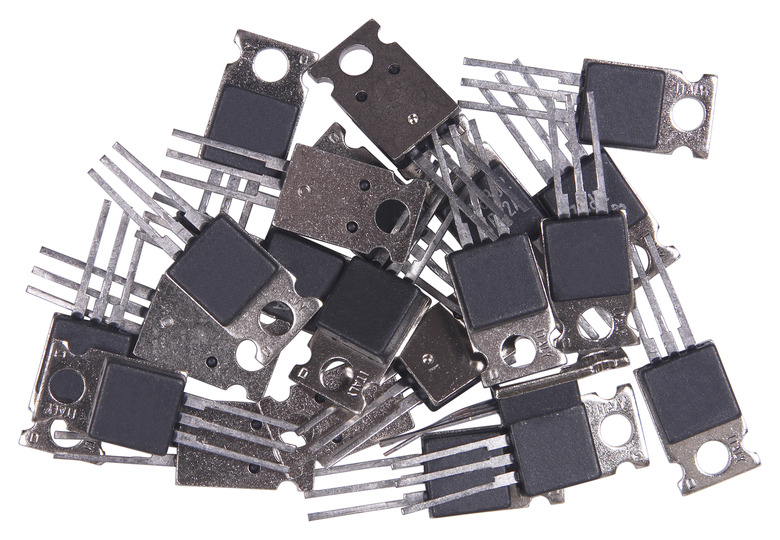How To Know A Transistor Number
Transistors are semiconductors whose primary functions are switching and amplifying electrical signals. Materials that transistors are made from include silicon and germanium. Bipolar junction transistors are the most commonly used type. To help identify them, transistors are labeled with number and letters on their casings.
Transistors are labeled according to the numbering system that is used. The primary numbering systems are JIS, Pro Electron, and JEDEC. JIS is an acronym for Japanese Industrial Standard, and it is used in Japan, while Pro Electron is a European standard. JEDEC is a North American standard developed in the United States that is also worldwide.
Although some companies will use their own proprietary markings, for you to know the meaning of a transistor number, it is necessary to understand the different standards and to have access to the different systems' code charts.
Step 1
Examine the JEDEC chart. The typical format for the transistor is a digit, letter and serial number. The first digit is the number of leads minus one. An ordinary bipolar transistor has three leads, so the first digit for it will be 2. The letter N is for semiconductors, so this will be the letter written on a transistor using this system. The serial number gives information about the device operation and specifications, and you must read the packaging or data sheet to find them. Sometimes there are extra letters on the transistors that refer to the manufacturer. M means the manufacturer is Motorola, while TI means Texas Instruments. A code 2N222 is an example of a transistor with JEDEC coding.
Step 2
Study the Pro Electron chart. Its format for transistors is two letters followed by a serial number. The first letter represents the material. For instance, A means germanium and B means silicon. The second letter refers to transistor type. For instance, C means small signal and D means power.
Step 3
Analyze the JIS chart. Its format for a transistor is a digit, two letters and a serial number. The first digit is the number of leads minus one, so it will be 2 for a bipolar transistor. The first letter will be an S, for semiconductor. The second letter refers to transistor type, such as A for a high-frequency PNP transistor and C for an NPN high-frequency transistor. Sometimes 2S is assumed, and so it is not explicitly written on the component's casing.
Step 4
Identify transistors with JEDEC labeling. An example of one is 2N3906, which is a PNP transistor. The data sheet shows that it can be used in environments with small voltages and currents.
Step 5
Examine transistors with Pro Electron labeling. The BLX87 is an NPN power transistor made from silicon. The data sheet shows it can be used in environments with radio frequencies.
Step 6
Inspect transistors with JIS labeling. The 2SB560 is a PNP transistor type. The label will often read B560, where the 2S is assumed. The data sheet shows it is used in low-frequency power amplifiers.
Things Needed
- JEDEC numbering code chart
- Pro Electron numbering code chart
- JIS numbering code chart
- Transistors
- Data sheets
References
- "Practical Electronics For Inventors 2/E"; Paul Scherz; 2006
Cite This Article
MLA
Lewis, Kim. "How To Know A Transistor Number" sciencing.com, https://www.sciencing.com/transistor-number-8759264/. 24 April 2017.
APA
Lewis, Kim. (2017, April 24). How To Know A Transistor Number. sciencing.com. Retrieved from https://www.sciencing.com/transistor-number-8759264/
Chicago
Lewis, Kim. How To Know A Transistor Number last modified March 24, 2022. https://www.sciencing.com/transistor-number-8759264/
